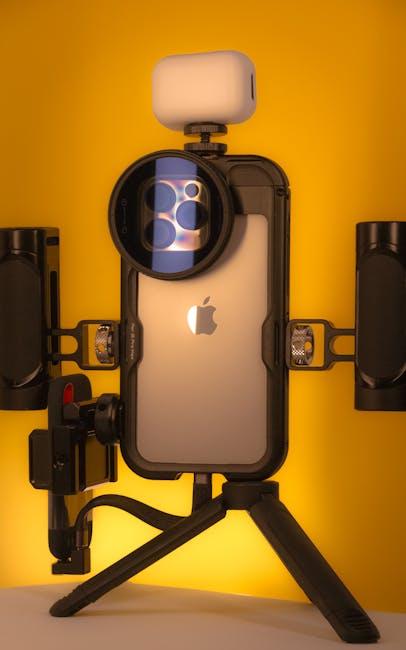In the ever-evolving landscape of cinema, the director stands as both visionary and architect, crafting narratives that captivate audiences across the globe. From the gritty, unpolished edges of independent films to the polished spectacle of mainstream blockbusters, directorial styles have transformed dramatically over the decades. This evolution reflects not only changes in technology and audience preferences but also the shifting tides of cultural and artistic expression. As we journey through the rich tapestry of cinematic history, we uncover how directors—armed with unique perspectives and innovative techniques—have continually redefined the art of storytelling, blurring the lines between indie authenticity and Hollywood grandeur. Join us as we explore the dynamic interplay between these two worlds, revealing how their distinct yet intertwined paths have shaped the films we cherish today. Avant-Garde to Blockbuster: Tracing the Roots of Cinematic Innovation”>
Avant-Garde to Blockbuster: Tracing the Roots of Cinematic Innovation”>
From Avant-Garde to Blockbuster: Tracing the Roots of Cinematic Innovation
In the ever-evolving landscape of cinema, directorial styles have been the heartbeat of storytelling, bridging the gap between avant-garde experimentation and mainstream appeal. Independent filmmakers often serve as the vanguard of innovation, introducing audiences to fresh perspectives and unorthodox techniques. These pioneers explore narratives through unique lenses, focusing on:
- Non-linear storytelling that challenges conventional plot structures.
- Minimalist aesthetics that emphasize raw, emotional performances.
- Cultural specificity that highlights diverse voices and experiences.
As these techniques gain traction, they frequently transition into the realm of blockbuster cinema, where directors adapt these elements to fit broader audiences. The mainstream arena often incorporates these innovative styles by:
- Blending genres to create hybrid narratives that captivate wide-ranging demographics.
- Leveraging technology to enhance visual storytelling with cutting-edge effects.
- Emphasizing character-driven plots that resonate on a universal level.
This dynamic interplay between independent ingenuity and mainstream adaptation continues to redefine the cinematic experience, proving that bold artistic visions can indeed become the cornerstone of global entertainment.

Blurring the Lines: How Indie Directors Influence Mainstream Filmmaking
In recent years, the boundaries between independent and mainstream cinema have increasingly become blurred, largely due to the influence of indie directors who have transitioned into larger projects. These filmmakers bring with them a unique vision and storytelling style that often defies conventional norms. Their work is characterized by:
- Innovative Narratives: Indie directors often experiment with non-linear storytelling, challenging audiences to engage more deeply with the plot.
- Character-Driven Stories: There’s a focus on complex, multi-dimensional characters, allowing for a more personal and intimate viewer experience.
- Visual Aesthetics: A distinctive visual style, often marked by minimalism or bold, unconventional choices, sets their work apart.
As these directors bring their sensibilities into mainstream projects, they inspire a shift in how stories are told on a larger scale. The result is a cinematic landscape that embraces diversity, complexity, and innovation, appealing to a broader range of audiences while retaining a distinct artistic touch.
Crafting a Vision: The Role of Technology in Shaping Directorial Styles
In the rapidly evolving landscape of cinema, technology has become a pivotal tool for directors, transforming their creative visions into reality. With advancements such as virtual reality, artificial intelligence, and high-definition digital cameras, filmmakers can now explore storytelling in unprecedented ways. Independent directors, in particular, are harnessing these technologies to break free from traditional constraints, crafting unique narratives that resonate with niche audiences.
Key technological influences shaping directorial styles include:
- Digital Editing Suites: Allow for seamless experimentation with pacing and structure.
- Advanced CGI: Enables the creation of fantastical worlds and characters.
- Drone Cinematography: Offers dynamic aerial shots previously unattainable.
These innovations empower directors to push the boundaries of storytelling, blending visual artistry with cutting-edge techniques to redefine both independent and mainstream cinema.

Finding Your Voice: Lessons for Aspiring Directors in a Diverse Film Landscape
In today’s film industry, aspiring directors face the challenge of navigating a complex and ever-evolving landscape. The journey to finding one’s unique voice amidst a sea of diverse influences can be both daunting and exhilarating. Independent cinema often serves as a playground for experimentation, where directors can explore unconventional narratives and visual styles. Here, the freedom to take risks without the constraints of mainstream expectations allows for a more personal and authentic expression.
- Embrace Diversity: Incorporating diverse perspectives can enrich storytelling and broaden your audience.
- Balance Art and Commerce: Understanding the demands of both independent and mainstream cinema can help you carve a niche.
- Innovate with Technology: Utilize new tools and platforms to enhance your storytelling capabilities.
Mainstream cinema, on the other hand, often requires a more strategic approach. Directors must learn to balance creative vision with commercial viability, crafting stories that resonate on a larger scale while maintaining their unique style. By studying the evolution of directorial styles across both realms, emerging filmmakers can draw inspiration and develop a distinctive voice that speaks to the heart of a diverse audience.

